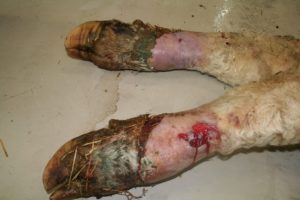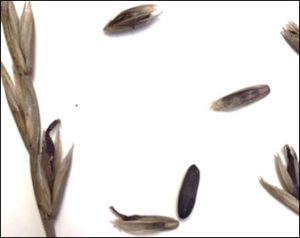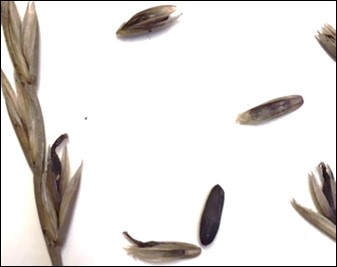Ergot Poisoning Identified
19 December 2018There is a report from a North-East Scotland suckler cow herd of ergot poisoning, with some cattle having to be put down. Although usually associated with contaminated grain, the source of ergot in this case was from late cut baled grass silage, other reports have found ergot in grass cut for silage from arable field margins. Silage associated ergot toxicity has been described previously in the UK. Risk factors include late cut silage (as seed heads develop) and wet weather. Ergot toxicity may be a risk where late cute silage has been taken, particularly following wet autumn weather. If you are feeding this type of silage/hay check now for any of the following symptoms:
Chronic
Symptoms occur when contaminated feed is fed over a long period of time.
- After 2 to 6 weeks the animals may become lame/recumbent.
- Diarrhoea may be seen.
- The toxins restrict blood flow to the extremities; lower legs, tail and ears, which become gangrenous and die(example shown in image 1).
- Affected areas become red and swollen and feels cold to touch with loss of sensation. Hair is lost and an indented line appears at the junction between normal and dying tissue. This is not painful.
- Affected tissues become blue/black. They start to separate from normal tissue and will eventually drop off.
Acute
- Animals may appear drowsy and can stagger or fall.
- They may become temporarily blind/deaf.
- They have episodes of fitting during which they may die.
If you have seen any of these signs:
- Stop feeding the silage immediately
- Contact your vet
Long term, low level feeding can reduce feed intakes and live weight gains. Winter coats may not be shed. In sheep ulceration of the tongue, mouth, stomachs and intestines has been reported instead of limb gangrene. There is no treatment for ergotism.
Looking for ergots in silage is not easy, particularly if levels are low. They can be identified as a small black growth that protrudes from the seed head and resembles rat/ mice droppings.
Mary Young, mary.young@sac.co.uk
Sign up to the FAS newsletter
Receive updates on news, events and publications from Scotland’s Farm Advisory Service



